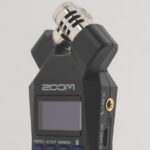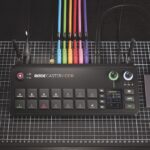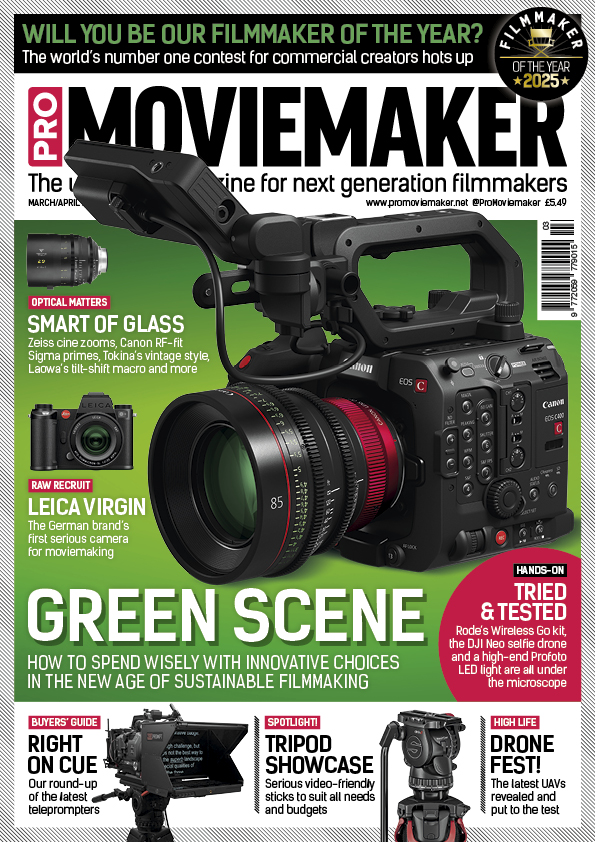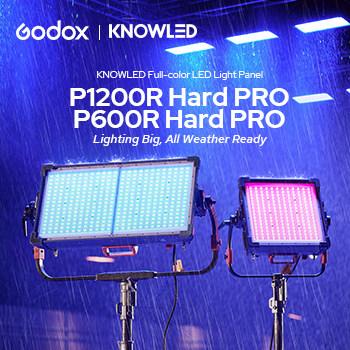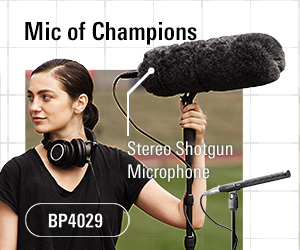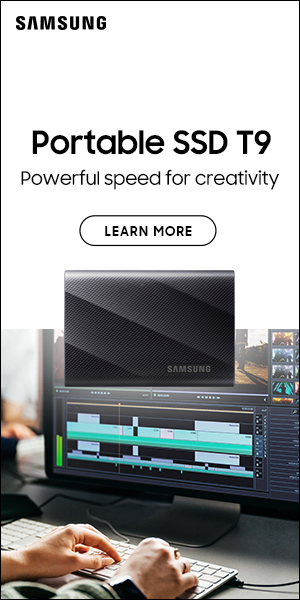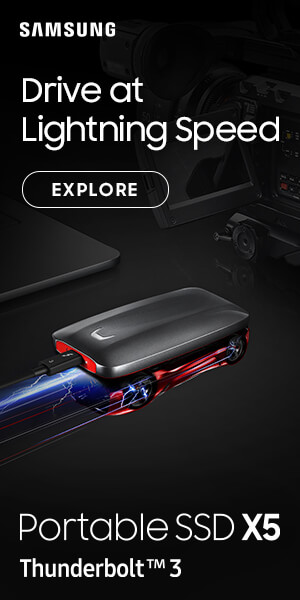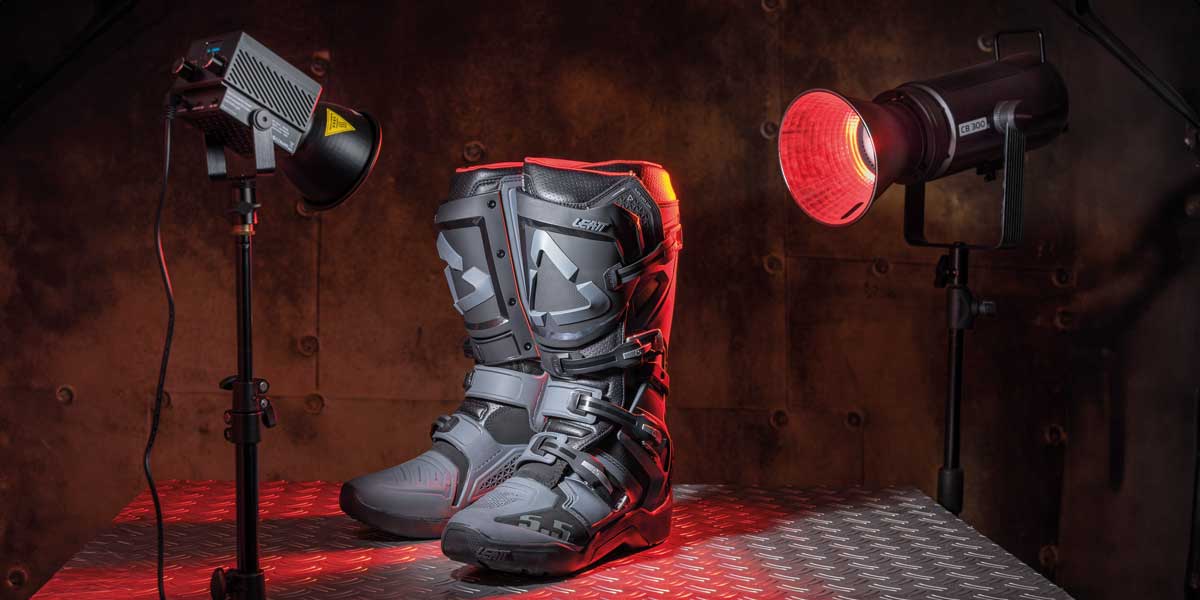
Give Dull Lighting The Boot
Posted on Nov 23, 2024 by Pro Moviemaker
Creating drama in the studio or on location needn’t cost the earth with the latest LEDs from Neewer and Kenro
Advertisement feature
LEDs have transformed video lighting, making most HMIs, tungsten and fluorescent tubes look distinctly old-school. These technologies used to rule in professional filmmaking, boasting the upper hand in power, reliability and consistency of output. Those early LEDs were plagued with strange magenta-green casts – so much so that many serious gaffers totally snubbed them.
Over a decade of development has seen the lights get more powerful, accurate, compact and packed with colour options at lower prices.
From daylight to bicolour, then RGB and RGBWW, they now feature two types of white – warm and cool. Some models even include RGBLAC with lime, amber and cyan, or Blair with blue, lime, amber, indigo and red LED chips to produce full white-spectrum light. Not to mention, CCT ranges have widened and dimming has become colour-accurate. For creative lighting experts, it opens up a whole new world of possibilities.
LED panel lights, tube lights, foldable flat panels and practicals have all benefited from the latest tech and investment. But for many, the power and ability to modify the light in various ways has helped chip-on-board (COB) lights take off.
These COB lights deliver high power output while remaining compact enough to fit in different places. As point light sources, they work brilliantly with modifiers, from simple reflectors that amp up their hard output to softboxes and parabolic umbrellas that soften and focus the light. Projector units allow creative DOPs to project shapes or cut hard-edged light slashes. As the vast majority of COB lights use the standard Bowens mount, there are lots of modifiers to fit. Smaller lights can use these with an adapter, too.
Since prices have dropped, you get more for your money. We explore some of the newest affordable lights and test them on a commercial shoot for motorcycle boots.
Neewer’s Newest
It was only a few years ago that a COB light rated at 300W was thought to be a cutting-edge piece of electrical engineering, near the top of what LED technology could achieve. Now, we have COB lights that put out much more than that, but at the cost of massive size, weight and price.
Neewer’s latest CB300C costs just $400 – the UK price is yet to be set – and is a typical monoblock-style fixture with the power unit and all controls on the head. There’s no separate power pack or transformer unit to rig up or trip over. Just plug the head into the AC mains and turn it on. What’s not typical at this price point is its full-colour output rather than being limited to bicolour.
Although Neewer has offered a 200W colour version of this light, this latest lamp pumps out a massive 300W. When used with the standard reflector, the output is an impressive 29,600 lux at 1m/3.3ft away. Of course, dial in some colour and that output drops, but it is a hugely powerful beam that can easily cope with the largest Bowens mount softboxes or parabolic boxes.
If you want to use it as a bicolour, then it offers a temperature range of 2500-7500K, with 0-100% flicker-free dimming. To test that, we pushed it with some NTSC 60Hz settings shooting at 240fps on our Sony A1. Despite being in a 50Hz PAL area, there were no issues at all.
Green-magenta adjustment of +/-50 makes for easy, precise tone changes, while the CRI and TLCI of 97+ shows how faithful the colours are. RGBWW mixing technology produces more than 90% coverage of Rec. 2020 HDR colour space – while that is not quite as much as some rival lights, it’s not as expensive either.
To set the colours, you can adjust HSI in 1% increments to hue, saturation and intensity, or try RGB with extra cyan and warm white options. A button on the rear panel lets you change the colour modes, and a dial sets the exact figure needed. It’s very simple, which is helpful when you’re tweaking colours on-set. A colour screen tells you everything you need to know.
Alternatively, gel modes let you set one of 20 Lee or Rosco colours, or switch to CCT mode to set colour temperature and green-magenta shift; all incredibly simple, just as it should be. You can’t manually tweak these gel settings, but very few would find it necessary.
As is the case with most full-colour LEDs, there are built-in scene modes and in the case of the Neewer, you have 17 of them. Dial in simulated lightning, paparazzi flashes, police car, candle light, TV screen, explosions, fireworks or more. Since it’s a colour fixture, the effect is pretty believable too.
To control the light remotely and make more detailed changes, you have 2.4G wireless control as well as the free Neewer app. This enables you to take control of up to 256 lights within 15m/49.2ft.
The built-in 2.4G system offers 99 channels, allowing multiple lights to be set to the same channel for group management within 20m/66ft. Any one of the lights can act as a remote to synchronise changes across the others.
With such a powerful output, the head needs active cooling, managed by a fan with three modes. Smart mode auto switches between high and low speed by monitoring the ambient temperature; Constant mode maintains consistent performance regardless of colour temperature or brightness; while Silent mode – limited to 40% of maximum brightness – uses low fan speed that’s virtually silent. The fan noise on the other modes isn’t too bad, but Silent mode is great when recording dialogue.
The Neewer’s aluminium alloy body is rugged and helps with heat dissipation. On the bottom of the light is an umbrella holder, giving a real old-school look when you don’t want to cart a softbox with you. The whole lot comes in a decent, fitted carry case too.
The Neewer might not have all the bells and whistles of the top-end COB lights or super-sexy design, but it does not command a huge price tag considering it’s a full-colour, 300W light. The colour output is accurate and can make a big difference to creative lighting, it’s easy to find suitable modifiers and many will appreciate the simplicity of the controls. For something that’s not a huge investment, it can make a massive difference to your creativity.
Kenro’s Compact Cob
While Neewer’s CB300C goes for the big boys with its full-colour range and large power, Kenro’s Smart Lite definitely goes the other way, being a compact bicolour unit. However, it still offers much of the advantages of the COB technology. That’s a lot of power from a small chipset, and at a low cost of just £200. There’s no US price available just yet.
In the case of the Kenro Smart Lite KSLC101, it’s a 60W LED with advanced features in a palm-sized package. The relatively powerful illumination, efficiency, durability, versatility and small form factor mean it can be squeezed into places other lights cannot. You can use it close-up as a key light – like we did in our bike boots shoot, where it plays well with other, more powerful lights. The CCT colour temperature range of 2700-7500K might not be quite as wide at the Neewer, but it’s the most useful range so you can match other lights or set a warm or cool mood on-set. The dimming range for intensity is 1-100%, giving you the flexibility to fine-tune to suit your set.
Just because it’s small, doesn’t mean that it’s inconsistent in light quality as it boasts a high CRI of 96+ and a TLCI of 97+ for good colour reproduction and skin tones. The standard reflector does a good job of producing an even spread of light, and a push-on rubber diffuser cap can be fitted to soften the light and widen its spread.
However, the bayonet fitting isn’t the full-size Bowens mount but a small version, which limits the options for fitting large accessories. This isn’t much of a problem, as few would want to use a massive softbox with such a small light. But it would be nice to have a readily available range of smaller accessories. Maybe these will come in the future, but out of the box the light is pretty limited in terms of modifying the output. Use it up close or in small spaces and it’s useful, though. The light is so small, you can always tuck it into the corner of your kitbag so it’s there when you need it – as long as you have access to mains power or a USB-C power bank, which can be plugged into the back of the head. There is no internal battery, though.
In use, the light is very bright, with illumination levels reaching up to 29,000 lux at 7500K with the reflector. However, this is at 0.5m/1.6ft, which is half the distance most lights are measured at. Drop down the kelvin range and power does drop a little, but not much.
Adjustment is made on the back panel using two rotary dials, with settings displayed on an OLED screen. It’s easy to work out and use, so that gets a big thumbs up.
You can even set up to eight specialised lighting effects – which include lightning, flickering screen and candlelight – though, as this is not a full-colour light, don’t expect the red-blue flashes of an American police car, for example.
For remote control, the light includes a basic wireless 2.4G control – or you can use an app for Android and iOS to change settings.
Build quality is decent, with an aluminium body and a screw-in adapter to fix to light stands. No case is supplied, however, so you might wish to keep it inside its box, which has cut-outs to prevent damage.
Other light options
The latest COB lights aren’t the only ones benefiting from the latest technology as other LED fixtures get smarter, more powerful and affordable.
Take light panels, one of the first to popularise use of LEDs in lighting as they put out soft, flattering light when used close.
These were largely daylight-only flat panels, but now come in bicolour as well as any other RGB or gel colour. Many have app or DMX control, some are all-weather IP rated and others can even flash, making them ideal for stills. Some LED panels are soft, flexible mats that can roll away after use.
Then there’s been an explosion in tube lights – either round or flat – that offer portable, affordable ways to add light to a set. From single-colour tubes to units that have pixel arrays inside, there is a big choice.
Add in practical lights such as bulb lights, and there’s a wide choice of fixtures to help put your creativity into overdrive.
This feature was first published the November/December 2024 issue of Pro Moviemaker.

